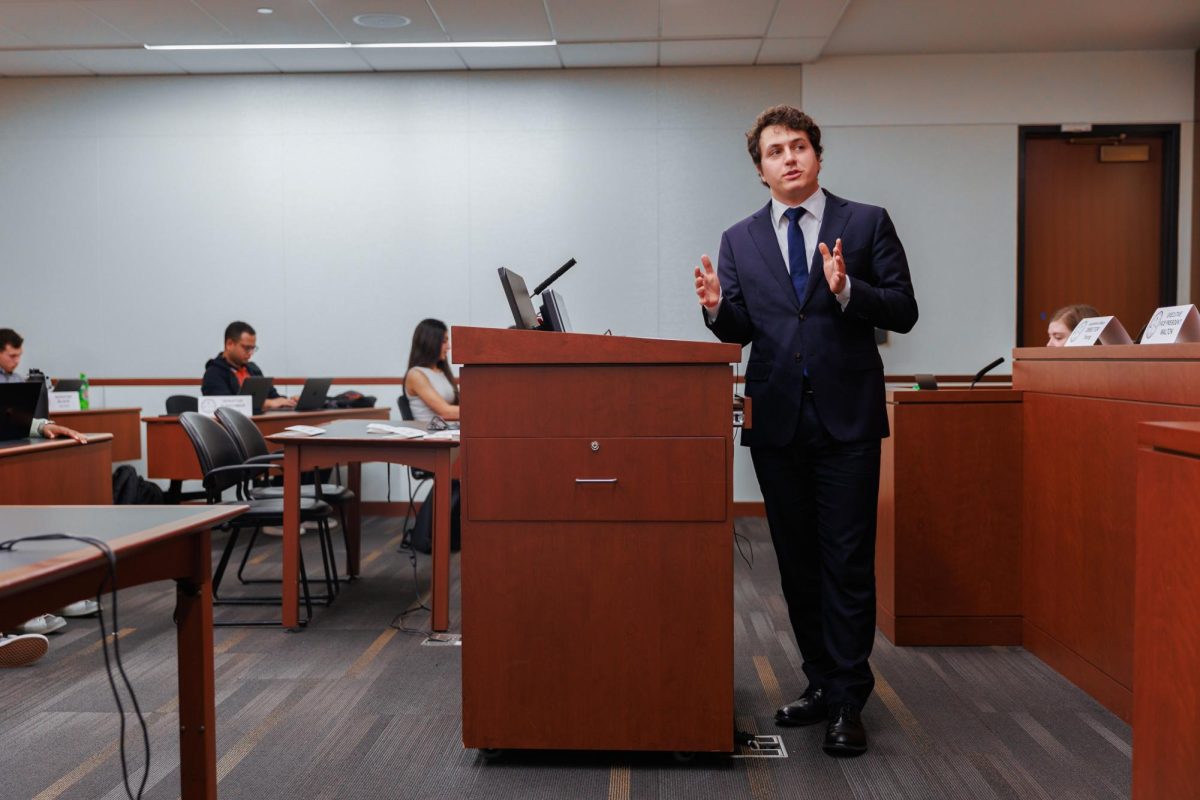The world will be listening to what GW students have to say May 1, the launch date of a Web site that will offer video footage recorded by college students.
Zoomculture.com will offer free, downloadable videos from 15 college campuses nationwide, including a page for GW.
This is media for the people, by the people, said Ken Howk, a representative for Zoom Culture, the company that will host the site. We’re blurring the line between viewers and doers.
The company, based in Chapel Hill, N.C., is targeting the college crowd because college campuses have fast Local Area Network connections that make viewing video online more enjoyable, said Dirk Wilcox, vice president of strategies at Zoom Culture. The company is most interested in broadcasting what college students have to say, he said.
Howk was on campus last weekend collecting two-minute segments of students saying whatever they want to broadcast over the Internet.
The University was the first stop on a five-week road trip to collect footage for the Web site. GW was selected over Georgetown University because students here are more interesting than Georgetown students, Howk said.
Students listed their credentials, complained about the number of cell phones on campus, sent greetings to friends overseas and complained about GW President Stephen Joel Trachtenberg, Howk said.
Howk said some students were afraid of the camera but had more to say than people he has recorded at various events in the past few months, including vacationers on spring break in Cancun, Mexico.
Kris Lotlikar, a Zoom Culture representative based in D.C., said many students refused offers to give a two-minute spiel on camera because people in D.C. are quick to refuse offers from strangers on the street. He offered another reason for students being camera-shy.
Some kids were too cool for the camera, Lotlikar said.
Zoom Culture will post digital videos, with little restriction on content, Wilcox said. Though the company will not post pornography, it will not censor other content.
We’re not going to be a censor, Wilcox said. It’s certainly going to be edgy.
David Swartz, chief information officer for GW’s Information Systems and Services, said he was not aware of the Web site, but the University would respond legally if necessary in the event that someone posts something defaming the University or Trachtenberg.
The beauty of the Web is the people have a voice . but the downside is that there is no peer review or editorial side, he said.
Zoom Culture representatives will lend digital cameras to students who have a story to tell or want coverage of an event. The Web site will be a C-SPAN for the people for student groups that get little coverage in mainstream media, Lotlikar said. The company hopes to post video of grass roots protests and rallies in D.C.
Zoom Culture will hand out about 12 cameras to film round-the-clock coverage of the April 16 protest of the World Bank and International Monetary Fund, Lotlikar said. A special A16 Web page linked off the main Zoom Culture page will launch before the rally.
Similar grass roots filming will occur worldwide, Wilcox said. The company will reach students in 87 countries by putting cameras in offices owned by Aiesec, a company that helps students around the world find exchange programs.
The Web site will also provide an outlet for students to post their own videos, which will allow people ages 12 to 25 to have more control in defining their own culture, Lotlikar said. Zoomculture.com will highlight videos based on the number of people who have viewed the material.
Right now MTV decides what’s cool, puts it on TV, and we’re supposed to think it’s cool, Lotlikar said. With Zoom Culture, what’s cool is decided by the number of hits.
GW students can use the University’s designated Web page in any manner they want, Lotlikar said.
We want to find the heart of what people at GW want to put on the Internet, he said.






